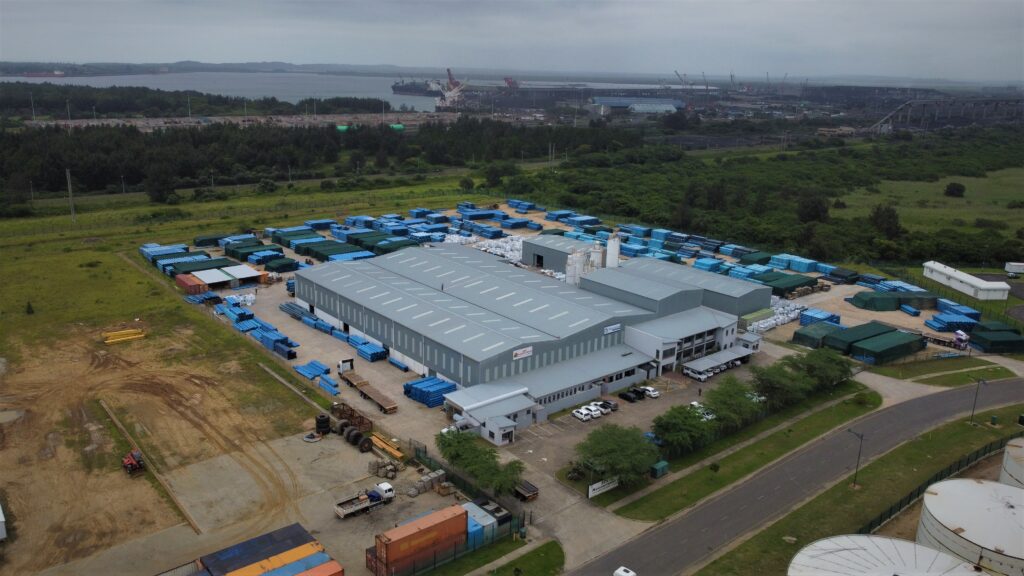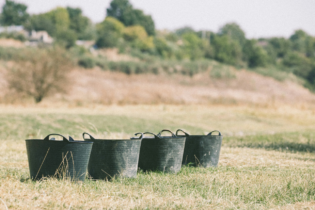Classification of the thermoplastic material and pipe stiffness is important for selecting the right material for an application, determining the load-bearing capacity, and predicting the long-term performance of the pipe.
Every thermoplastic polymer has a unique CRRC (creep rupture regression curve), which is plotted on a log-log scale as shown in Graph 1 – it is the ‘fingerprint’ of the polymer. The graph’s abscissa is the logarithm of time in hours while the ordinate is the logarithm of rupture stress in MPa. From this graph, the MRS (minimum required strength) of the polymer at 20°C and 50 years (438 000 hours) is determined – the design protocol according to ISO (International Organization for Standardization) for all thermoplastic pipes. The CRRC is determined by extensive pressure testing and mathematical extrapolation, conforming to ISO 9080 ‘Determination of the long-term hydrostatic strength of thermoplastics materials in pipe form by extrapolation’. The design coefficient (C), also known as a factor of safety, is determined, conforming to ISO 12162 ‘Classification and designation – Overall service (design) coefficient’. These two values are used in a simple formula (i) to determine the allowable design stress (σ) for the pipe: σ = MRS/C (i)Improvement of thermoplastic polymers
Thermoplastic polymers have improved over time, as shown in Table 1. For example, PVC-O has been developed over more than 40 years, through five classifications. The classification of a thermoplastic is 10 times its MRS at 50 years and 20°C. For example, PE100 has an MRS of 10 MPa at 50 years and 20°C. PVC-U and PVC-M have an MRS of 25 MPa at 50 years and 20°C, and should therefore be called ‘PVC-U 250’ to be strictly technically correct. PVC-M is also a ‘Classification 250’ material because it has precisely the same regression curve as PVC-U 250. Its increased allowable design stress (σ) is because of its reduced design coefficient (C), which is justified by the improved material impact strength resulting from the addition of impact modifiers to the polymer that produce tough and ductile characteristics in the pipe during the extrusion process.
Stress-strain curves
It is important to note the difference in the stress-strain curves in Graph 2 between Molecor’s TOM®500 and other lower PVC-O orientation classifications where the yield point has not been eliminated. The stress-strain curve of PVC-O Classification 500 exhibits a fundamental change, compared to other thermoplastics, that produces: • increase in modulus of elasticity• elimination of the yield valley.
Graph 2 shows the yield valley of other lower-classification thermoplastic polymers and its elimination with Molecor’s TOM®500 PVC-O Classification 500. It is critically important to understand ‘Classification’ refers to the material and ‘Class’ (PN) refers to the pressure class of the pipe. As the allowable design stress (σ) increases, the resulting minimum wall thickness (e) of the pipe decreases. The pipe’s stiffness is proportional to the wall thickness. Therefore, the pipe’s ring stiffness (SR) decreases as the wall thickness decreases. However, clause 11.3 in SANS 16422, which is applicable to all five PVC-O Classifications, states the minimum allowable SR shall not be less than 4 kN/m² to ensure the pipe will not distort while empty during construction or when drained, for whatever reason. Because the PVC-O pipe will be subjected to imposed soil and traffic loading while empty that it must withstand without assistance from internal pressure to resist these imposed loads.
Pipe stiffness
Graph 3 shows the ring stiffness (SR) of PVC-O 500 (Classification 500) pressure pipes, of various pressure classes (PN), plotted against their respective ring stiffnesses (kN/m²). It shows the ring stiffness does not go below 4 kN/m² for the lowest pressure class of pipe. The two lines representing SANS 791 S&D PVC-U sewer pipes ‘Normal Duty 51’ and ‘Heavy Duty 34’ have been included to provide perspective to the pressure pipe stiffnesses. The SANS 791 PVC-U S&D pipes are specifically engineered to withstand superimposed loading from trench backfill and traffic while operating in a partially or completely empty condition. The PVC-O 500 (Classification 500) pressure pipes are predominantly of a higher ring stiffness than the PVC-U sewer pipes. The SANS 791 S&D pipes have a pipe stiffness (SP) of 100 kPa and 300 kPa respectively; equivalent to a ring stiffness (SR) of 1.86 kN/m² and 5.59 kN/m² respectively. The applicable standard for PVC-O SANS 16422, taken from ISO 16422, is a standard that specifies all the critically important attributes of all classifications of PVC-O pipes and piping systems. It ensures the products conform strictly to all the requirements, are suitable for their intended purpose and will have a service life of not less than 50 years – TOM®500 is not less than 100 years as proven in the foregoing.| TABLE 1 Thermoplastic polymers classification, design coefficient and allowable design stress | |||||
| Polymer nomenclature | Applicable SANS | MRS MPa | Classification number | Design coefficient | Design stress MPa |
| PE80 | 4427 | 8 | 80 | 1.25 | 6.3 |
| PE100 | 4427 | 10 | 100 | 1.25 | 8 |
| PVC-U | 966-1 | 25 | 250 | 2 | 12.5 |
| PVC-M | 966-2 | 25 | 250 | 1.4 | 18 |
| PVC-O | 16422 | 31.5 | 315 | 1.6/2.0 | 20/16 |
| PVC-O | 16422 | 35.5 | 355 | 1.6/2.0 | 22/18 |
| PVC-O | 16422 | 40 | 400 | 1.6/2.0 | 25/20 |
| PVC-O | 16422 | 45 | 450 | 32/28/23 | 32/28/25 |
| PVC-O | 16422 | 50 | 500 | 36/32/25 | 36/32/25 |
| TOM500 | 16422 | 55 | 500 | 1.4 | 36 |









